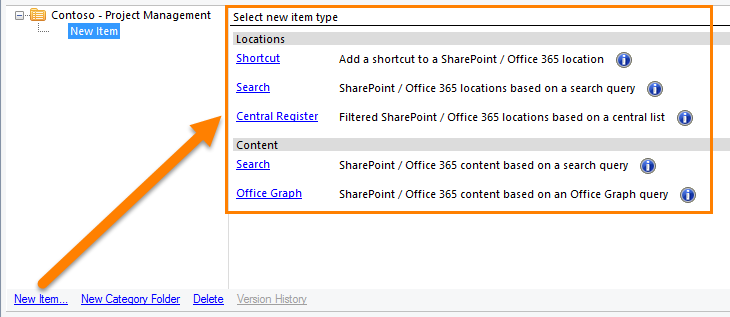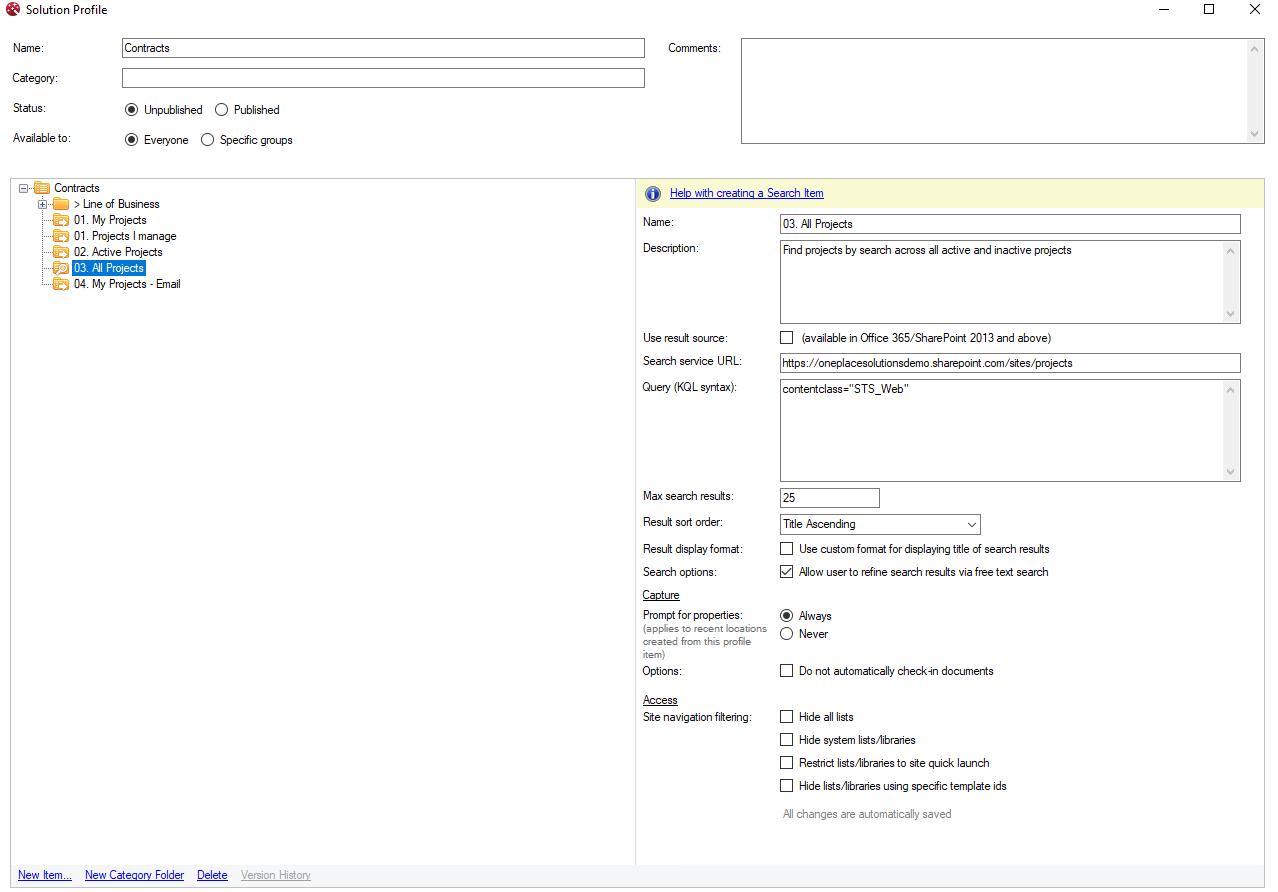Search (location item)
The Search (location item) provides the ability to define a search query (KQL) to return one or more locations from across your SharePoint/Office 365 environment. Locations may include site collections, sites, libraries, lists, folders and document sets.
The Search (location item) and contained search query is supported in Office 365, SharePoint 2010, SharePoint 2013 and above environments .
The SharePoint platform and configuration of Search within your environment will determine the richness and freshness of your search results.
You can incorporate Results Sources when using Office 365 or SharePoint 2013 and above. Results Sources can be further refined (if required) with a query search (KQL).Enter a valid search query (in KQL Syntax
Create new Search (location) Item
Select the Solution Profile
- Select 'New Item...'

- Choose 'Search' from the Locations item area

- Complete the Search Item form which appears
| Name | This is the name of the folder as it will appear under the Solution Profile within the navigation tree |
| Description | The description allows you to provide some further detail and purpose of the query being created. This is not currently displayed to the end user. |
| Use Result source |
Results sources are only available in Office 365 and SharePoint 2013 and above environment. What is a result source and how do I get the result source id? |
| Result source name | Enter the name of the Result Source |
| Result source id | Enter the result source id |
| Search service URL |
Enter the URL of your SharePoint Search service. Search is a service provided by SharePoint/Office 365. In many instances it is your front-end SharePoint server providing the service. Therefore, enter the root site collection URL. However, the search service may be provided by a dedicated server in your environment or multiple servers (load balanced) and the URL may be different. |
| Query (KQL Syntax) | Enter a valid search query (in KQL Syntax) |
| Result sort order | Select how you would like the search results ordered. Selecting an order will override any sort settings within a Result Source (if used). |
| Result display format |
You can optionally choose to use a custom format for presented different location types (e.g. sites, libraries, folders). The following is a list of valid tokens:
These can be used as appropriate for defining the presentation of search results in the navigation tree. |
| Site collection format | Optional - use tokens to define a custom display format when site collections are returned in the search result |
| Site format | Optional - use tokens to define a custom display format when sites are returned in the search result |
| List/Library format | Optional - use tokens to define a custom display format when lists/libraries are returned in the search result |
| Folder/docset format | Optional - use tokens to define a custom display format when folders/document sets are returned in the search result e.g. "ABC Folder - (Contoso Site)" [Folder] - ([Site]) |
| Search options | If selected, the end user will be able to further refine the search query within the navigation tree |
| Capture | |
|
Review or adjust the Capture options:
|
|
| Access | |
| Site navigation filtering options allow the removal of SharePoint libraries/lists from the navigation tree |
If searching for Site Collections, Sites or Libraries you can use the existing index managed properties of these locations (e.g. Title, UrlDepth, Path) and also create, crawl and make your own hidden property bag columns as Managed Properties (and available for use in search queries)
